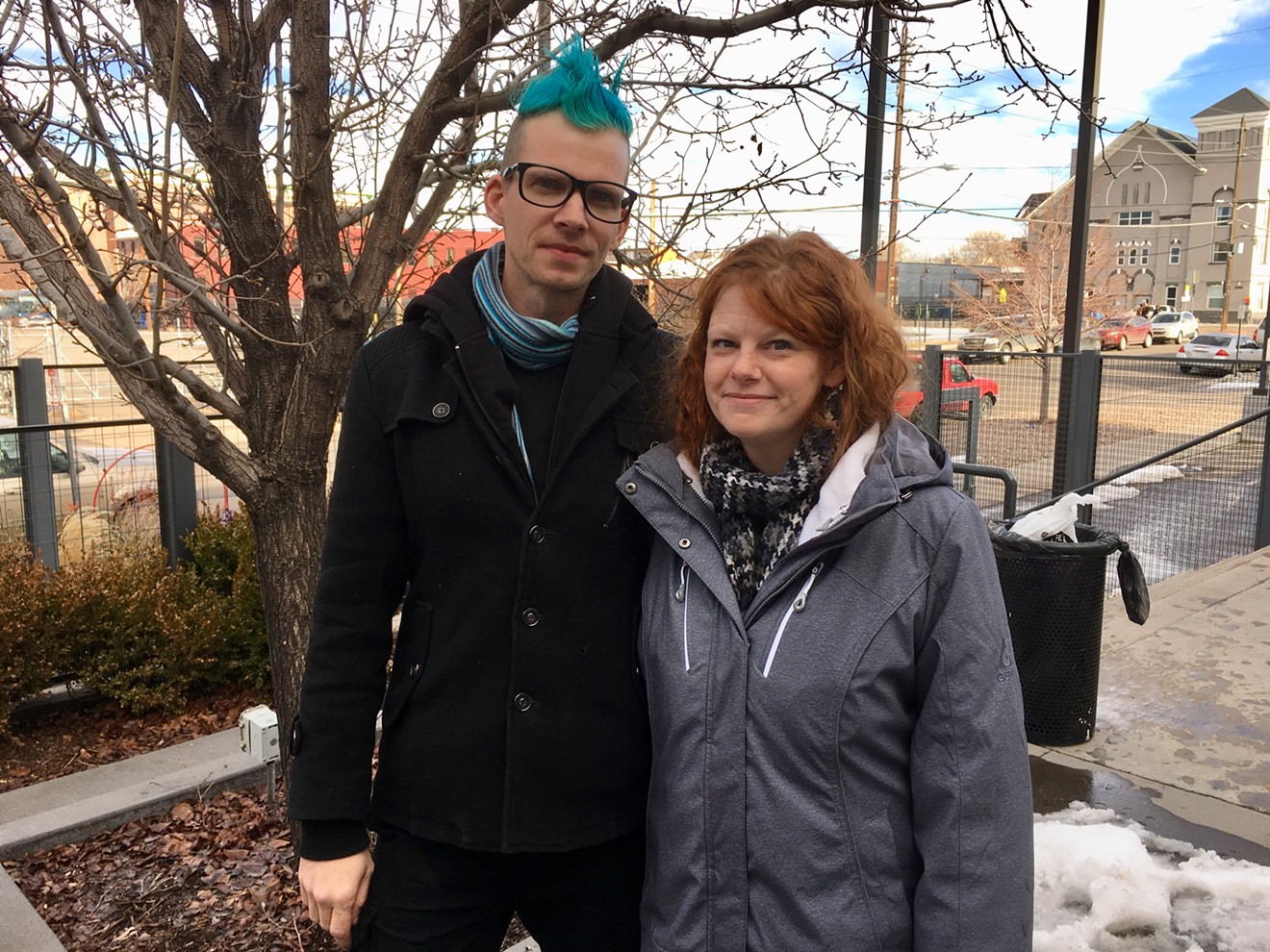Presenters included familiar organizations such as Denver Homeless Out Loud and the Colorado Village Collaborative, which recently announced that its tiny home village in RiNo is likely to move to Globeville before March. DHOL backs an initiative called the Right to Survive Initiative, which has been approved for the May 2019 municipal ballot and aims to protect the rights of all people, including the homeless, to sleep and rest in public.
Lesser-known actions and campaigns worth following in 2019 were also announced. 9to5 Colorado is working with state lawmakers, including state Senator Julie Gonzales, to introduce legislation in the coming weeks to allow rent control in Colorado. And organizers behind the Queen City Cooperative say that they’re gaining traction to change old zoning laws that restrict the number of “unrelated” adults who can legally live together in a home; Denver City Council is expected to consider the changes in the fall.
Some of the more anti-establishment candidates who are running in the May election were at the event, including mayoral hopefuls Lisa Calderón and Kalyn Heffernan, and city council candidates Candi CdeBaca and Jesse Parris.
There were also unfamiliar faces in the crowd, including organizers from other cities who had traveled to Denver to share their experiences with housing solutions and addressing homelessness in other parts of the country.
Steve Diaz, an organizer with the Los Angeles Community Action Network and the forum’s keynote speaker, discussed the need for efforts to stabilize someone's transition out of homelessness and how efforts in California to pass a Homeless Bill of Rights — similar to what was attempted four years in a row with the Right to Rest Act at the Colorado legislature — faced hurdles on the West Coast.

Local homeless-rights advocate Jerry Burton speaks before the crowd gathered at RedLine Gallery on Saturday.
Chris Walker
According to Hattie Rhodes and Andrew Constantino, both of whom live in a tiny house village named Nickelsville, Seattle has sanctioned nine tiny home villages with a combined 450 or so residents.
By contrast, Denver has only approved one village — the Beloved Community Village — which has eleven houses and has been forced to move a few times over zoning and other issues.
Granted, the greater Seattle area has around 12,000 people experiencing homelessness compared to metro Denver’s 5,300, but Rhodes and Constantino say that Seattle’s leadership has recognized tiny homes as a scalable way to help transition people to more permanent housing options.
“People will create their own stability if you just give them a place," Constantino says. “We’re going around the country exchanging ideas with other cities that have tiny homes. There’s a huge learning curve in setting up these communities."
One piece of advice Constantino has for Denver: The optimal village size is fifty people.
“If your numbers are too low, it’s too much pressure on just a few people who end up doing most of the work," he says. “If it’s too large, like with 100 people, you don’t get to know everyone, and that’s not good, either."
But with fifty people, he says, everyone knows each other on a personal level, and there’s bound to be enough diversity and expertise to have individuals who can bring different skills to the village, such as having a carpenter, an electrician, a teacher and someone who has medical training.
“We’re also here to find out what Denver is doing,” Rhodes adds, “so that we can go back to Seattle and maybe say, ‘They’re doing some cool stuff in Colorado.'”












